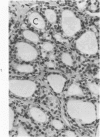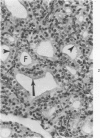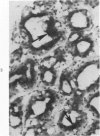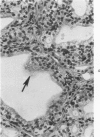Abstract
Polychlorinated biphenyls (PCB) produced ultrastructural lesions in thyroid follicular cells and reductions in serum thyroxine levels in rats that were time- and dose-dependent. The acute effects (4 week) of PCB (50 and 500 ppm) consisted of an accumulation of lysosomal bodies and colloid droplets in follicular cells with abnormalities of microvilli on the luminal surface. The chronic administration (12 week) of PCB (50 and 500/250 ppm) resulted in a striking distention of many follicular cells with large lysosomal bodies with strong acid phosphatase activity and colloid droplets, blunt and abnormally branched microvilli, and mitochondrial vacuolation. These ultrastructural alterations in follicular cells were associated with a highly significant reduction in serum thyroxine with both the low and the high dose of PCB. Follicular cells remained responsive to the lowered thyroxine level after feeding PCB for 4 and 12 weeks and underwent moderate compensatory hypertrophy and hyperplasia. Thyroid follicles were smaller than in controls and were lined by more columnar cells that occasionally formed papillary projections into the colloid. Residual ultrastructural alterations persisted for 12 weeks following cessation of feeding the compound, and serum thyroxine levels were significantly lower than in control rats. However, 35 weeks after discontinuing PCB, thyroid follicular cells were similar to those in controls and serum thyroxine levels had returned to normal. The striking ultrastructural lesions in follicular cells produced by feeding PCB to rats appeared to contribute to the lowering of serum thyroxine levels, in combination with the known stimulation of peripheral thyroxine metabolism by these compounds. Certain metabolic alterations produced by PCB intoxication in experimental animals and human beings may be related to an alteration in thyroid function.
Full text
PDF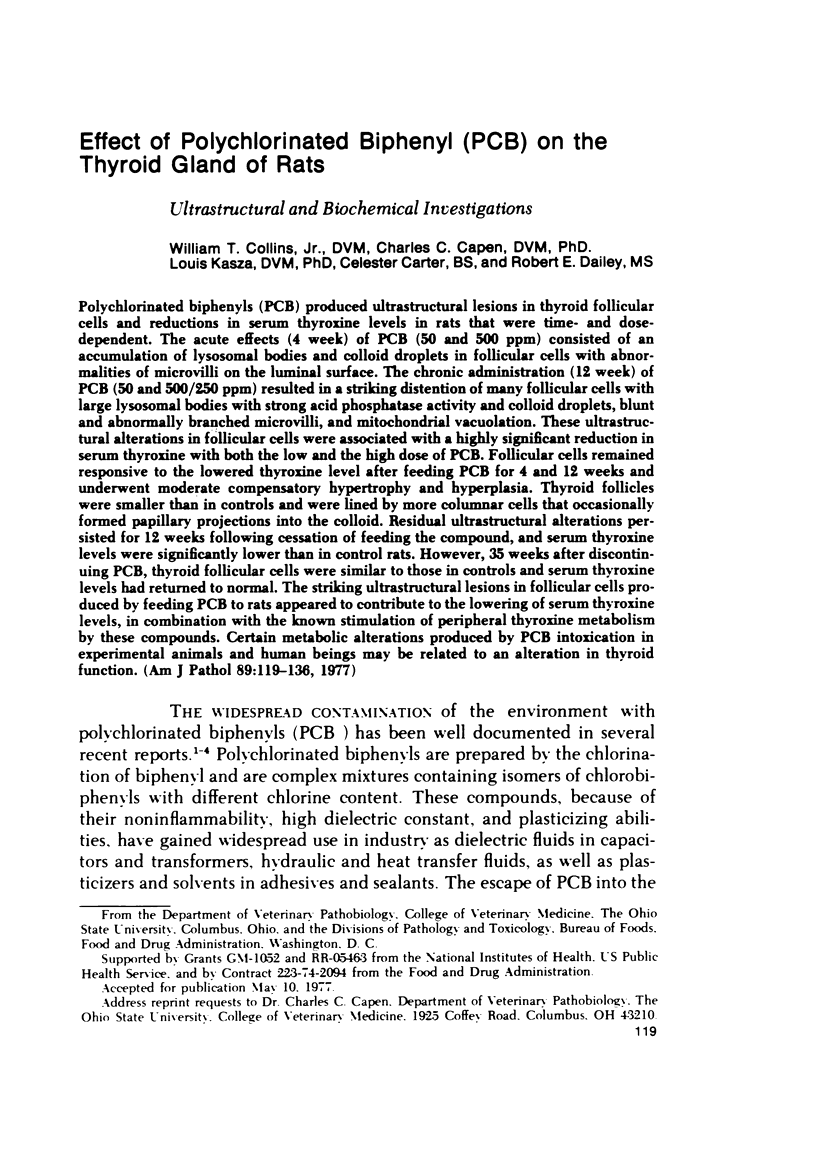
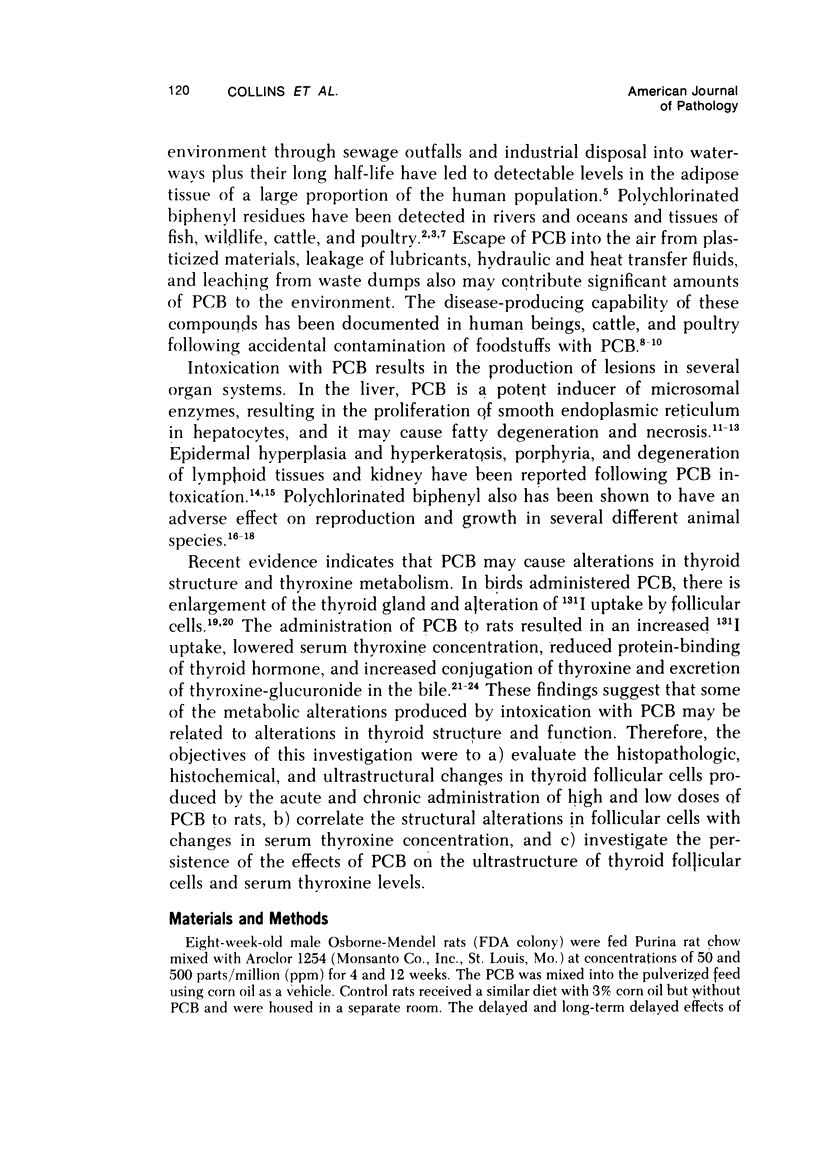
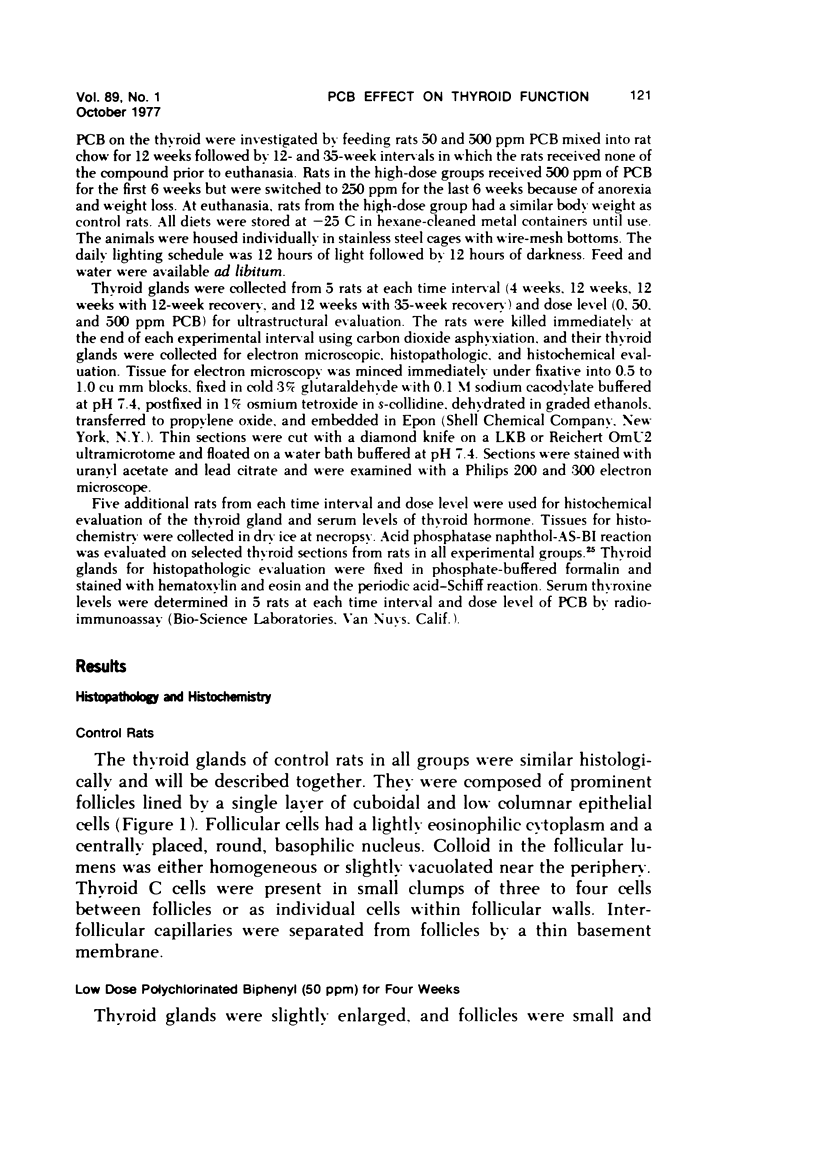
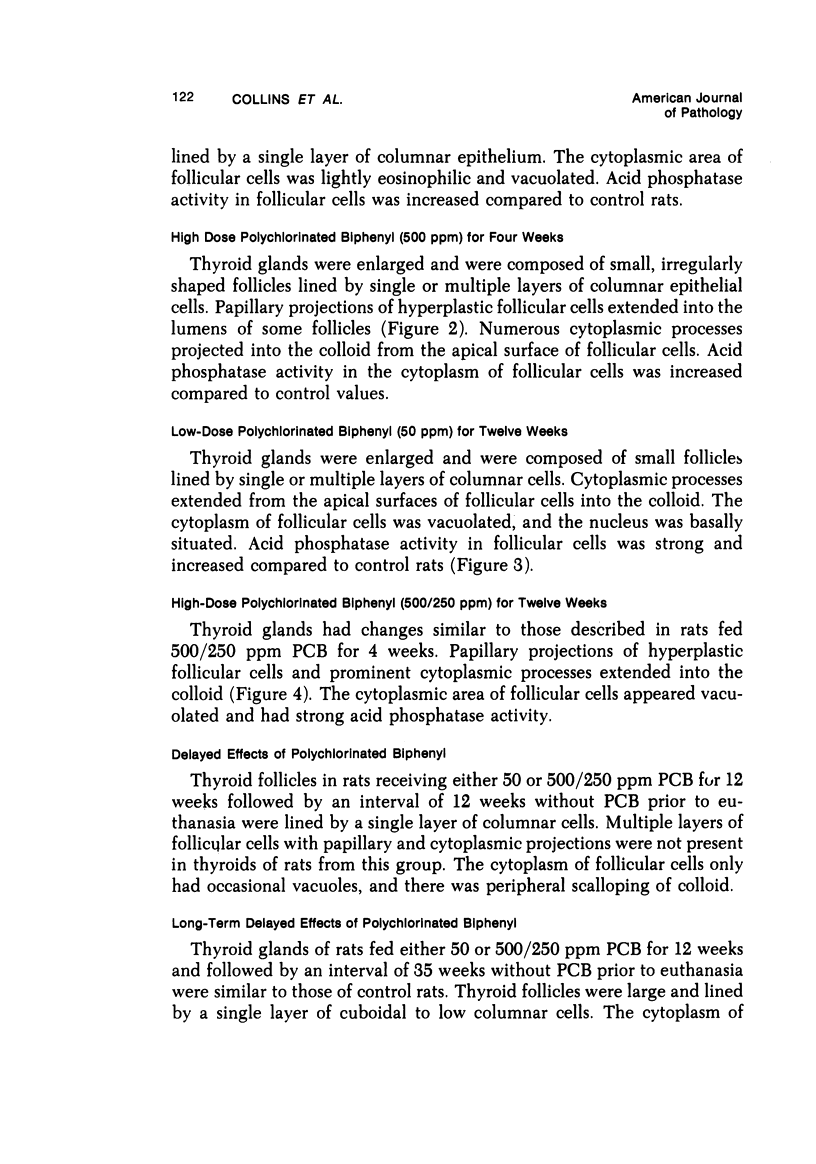
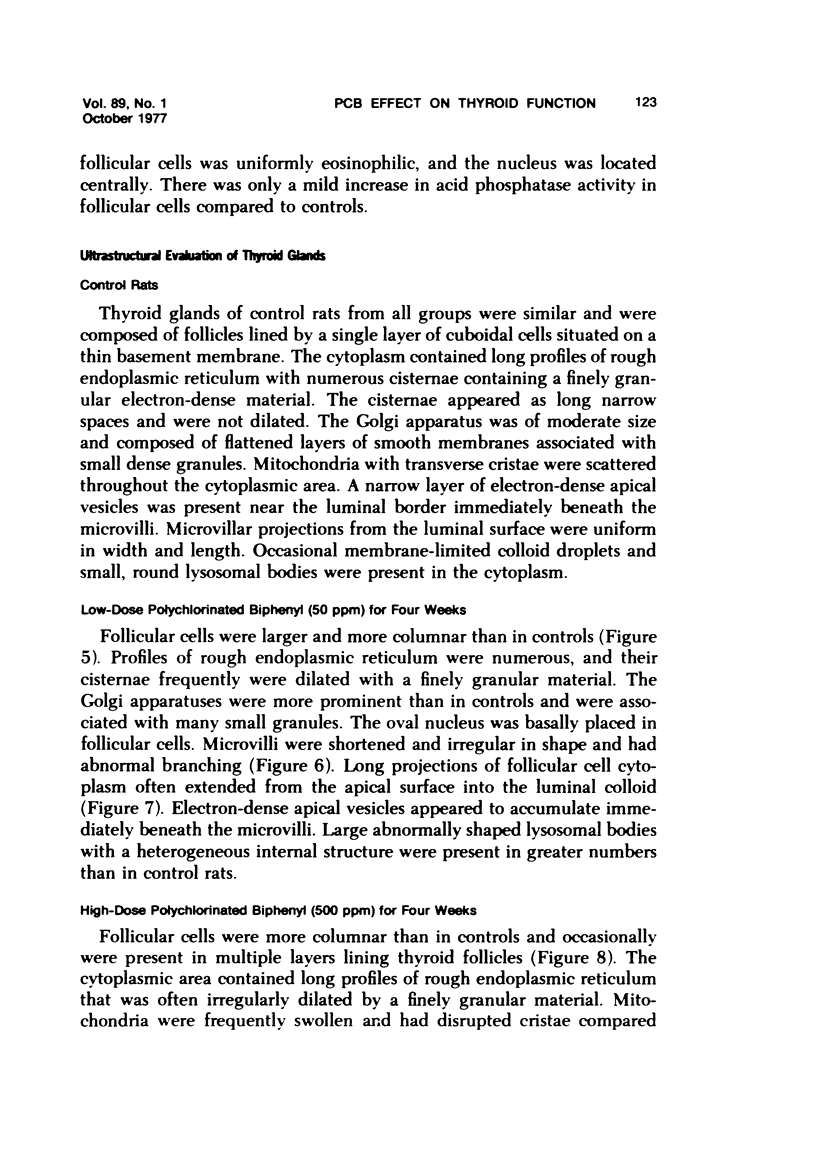
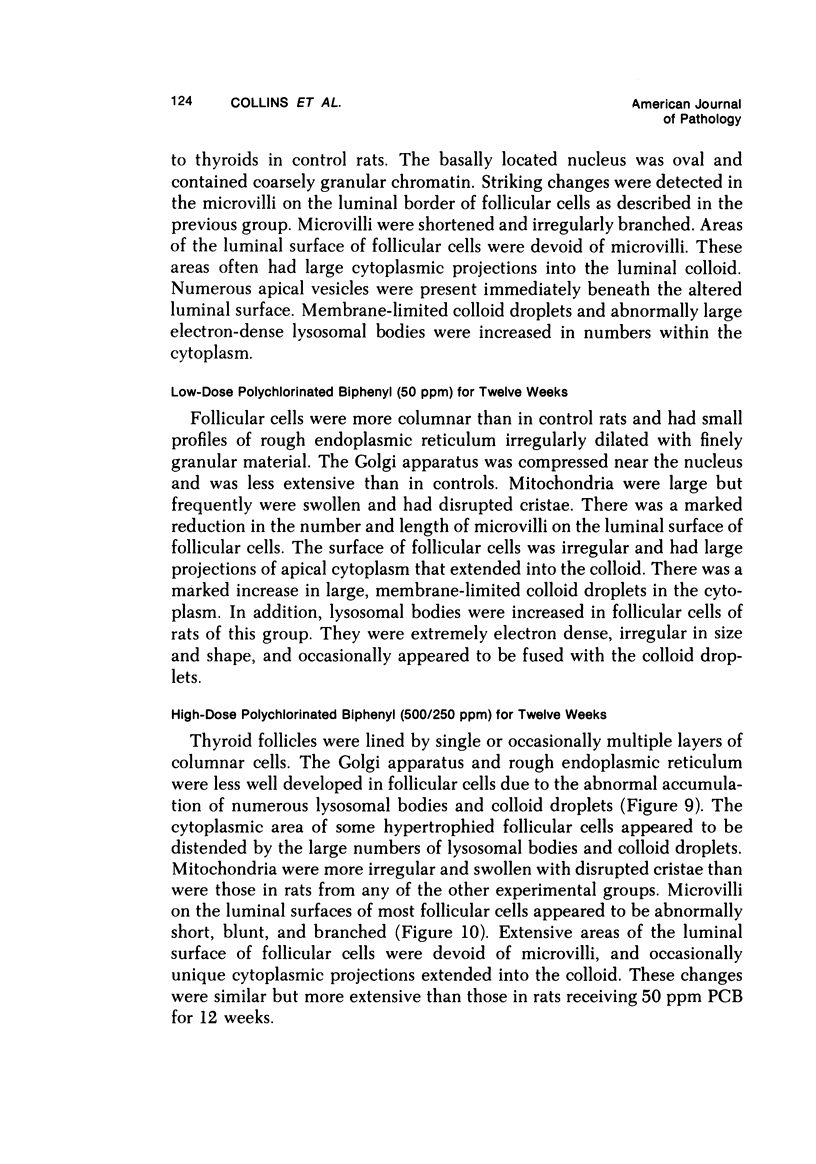
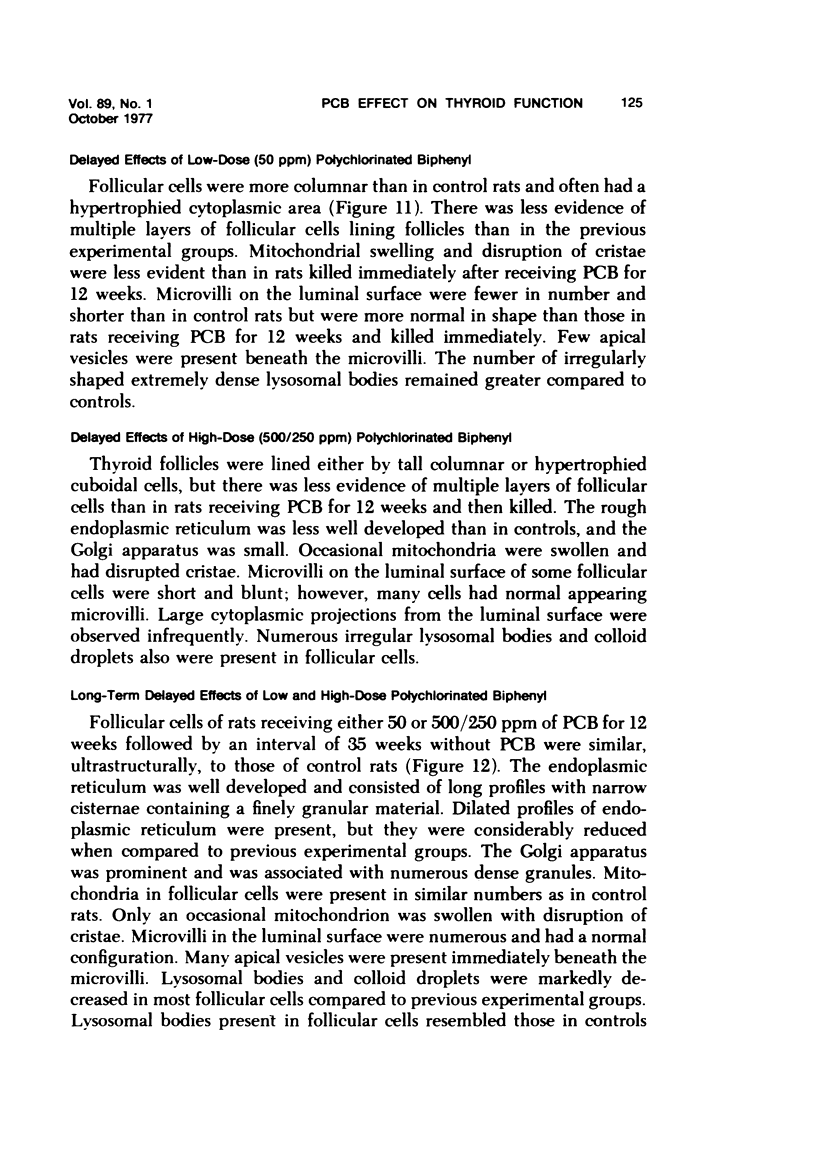
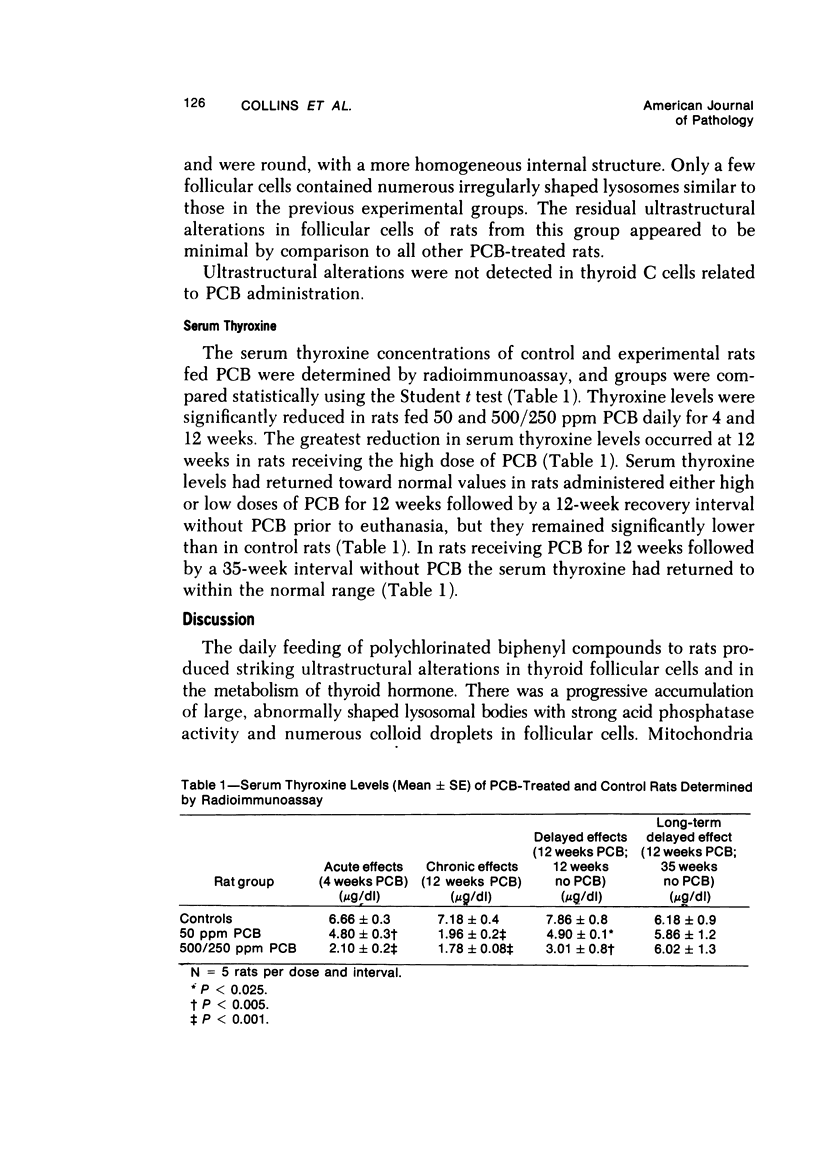
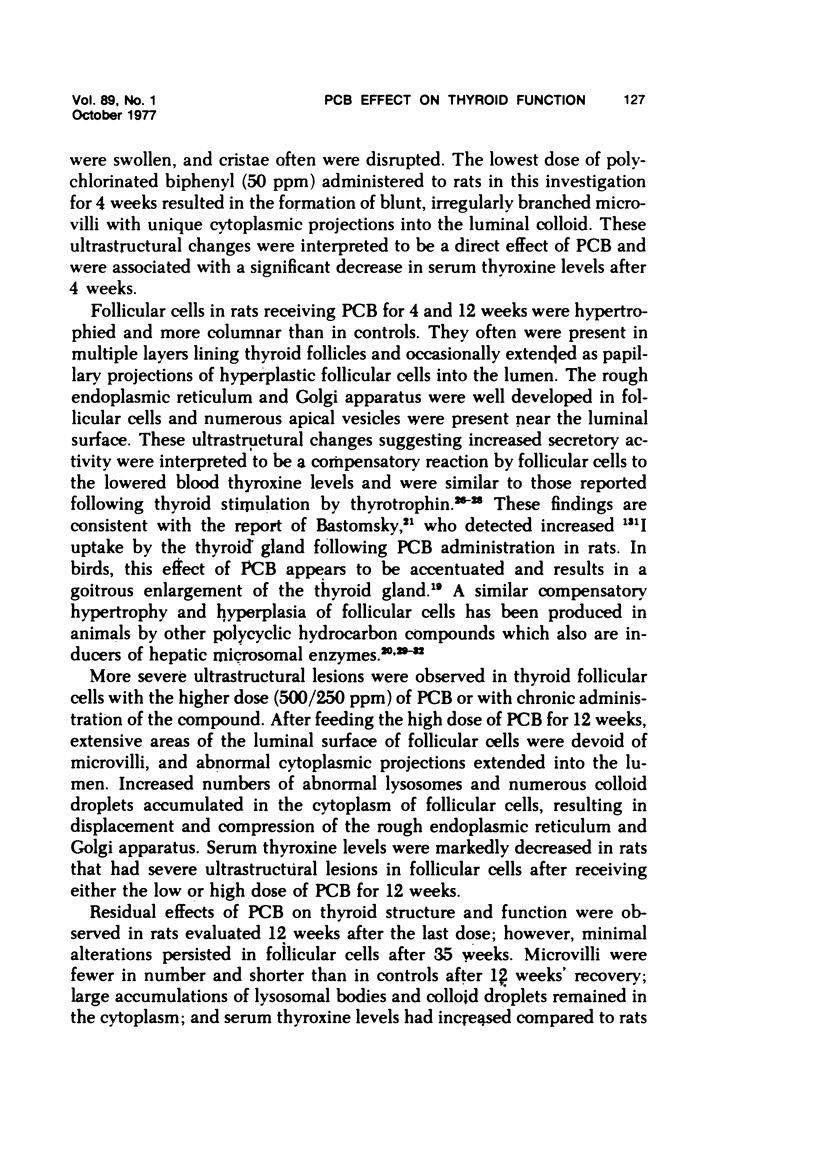
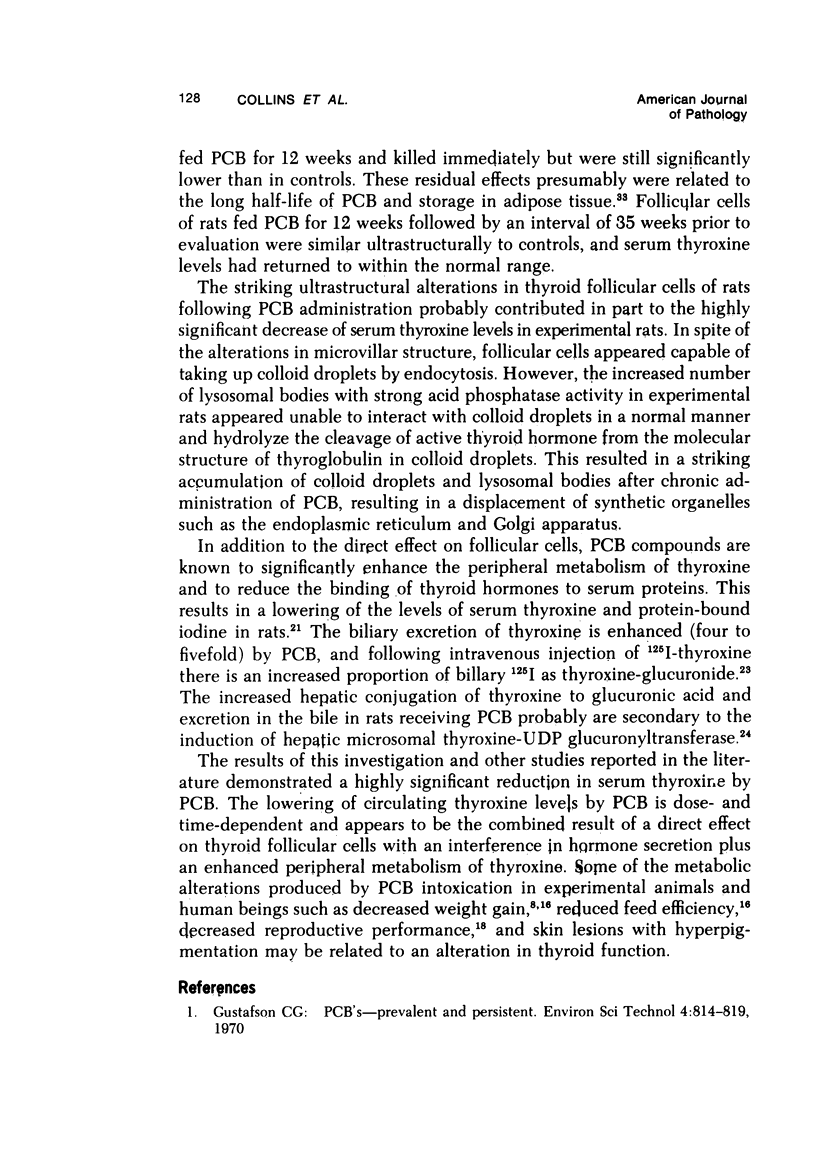
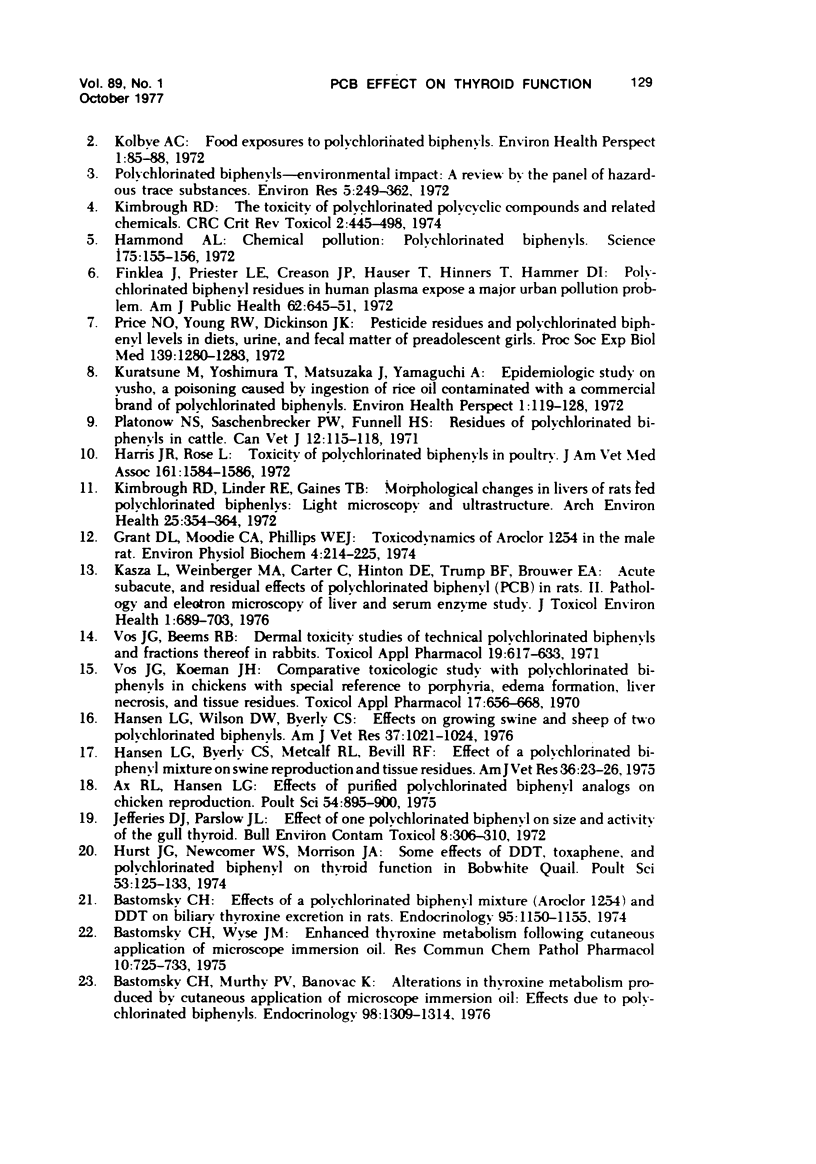
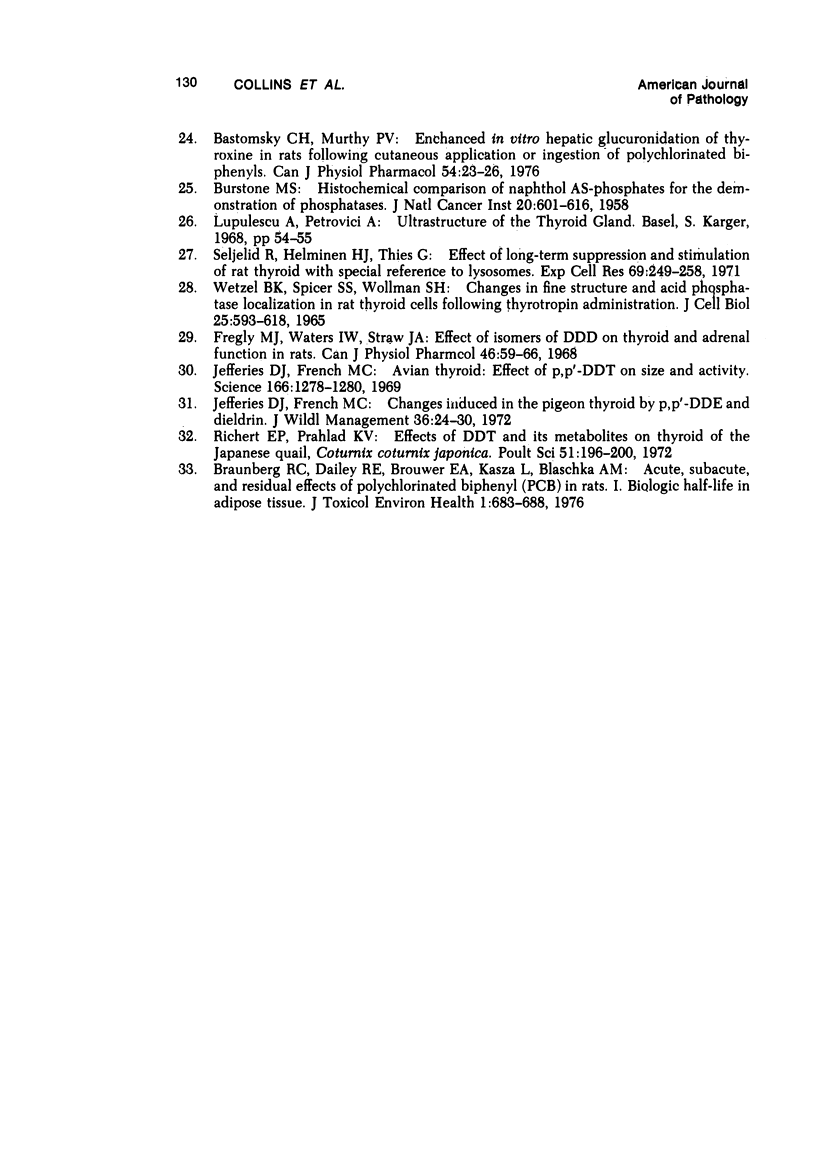
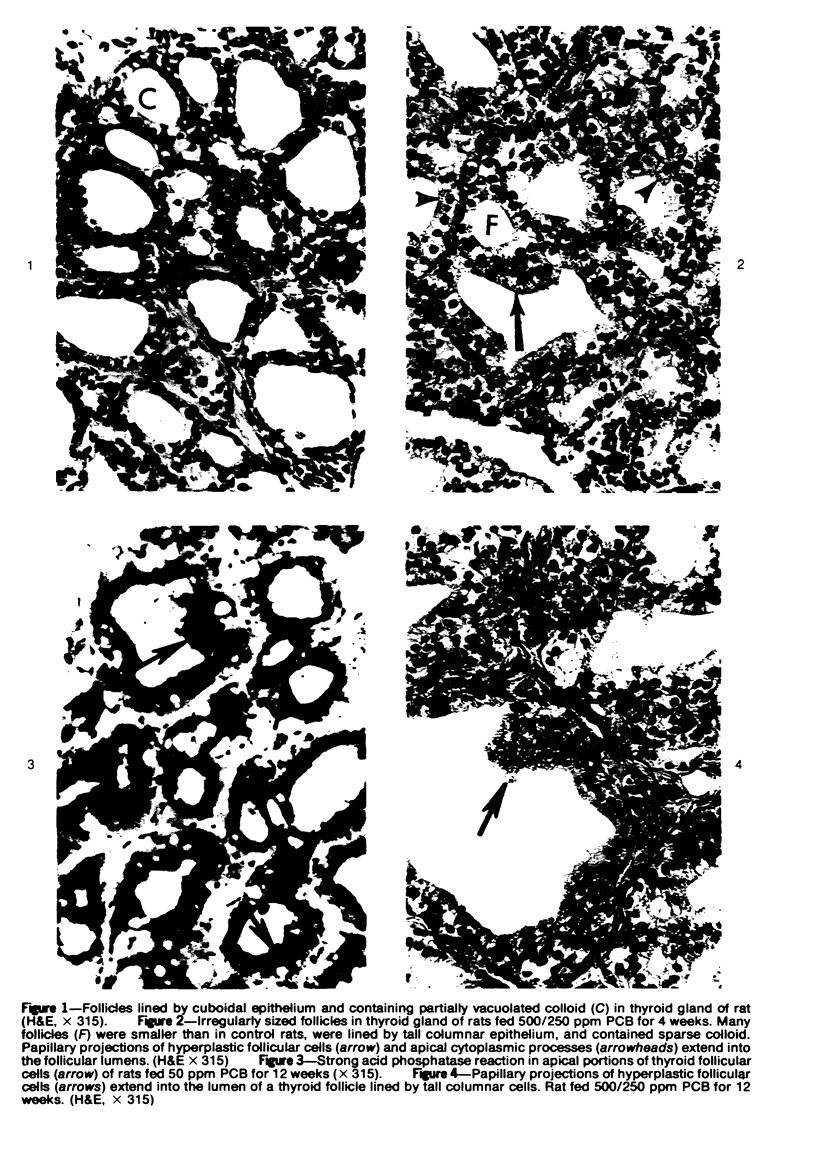
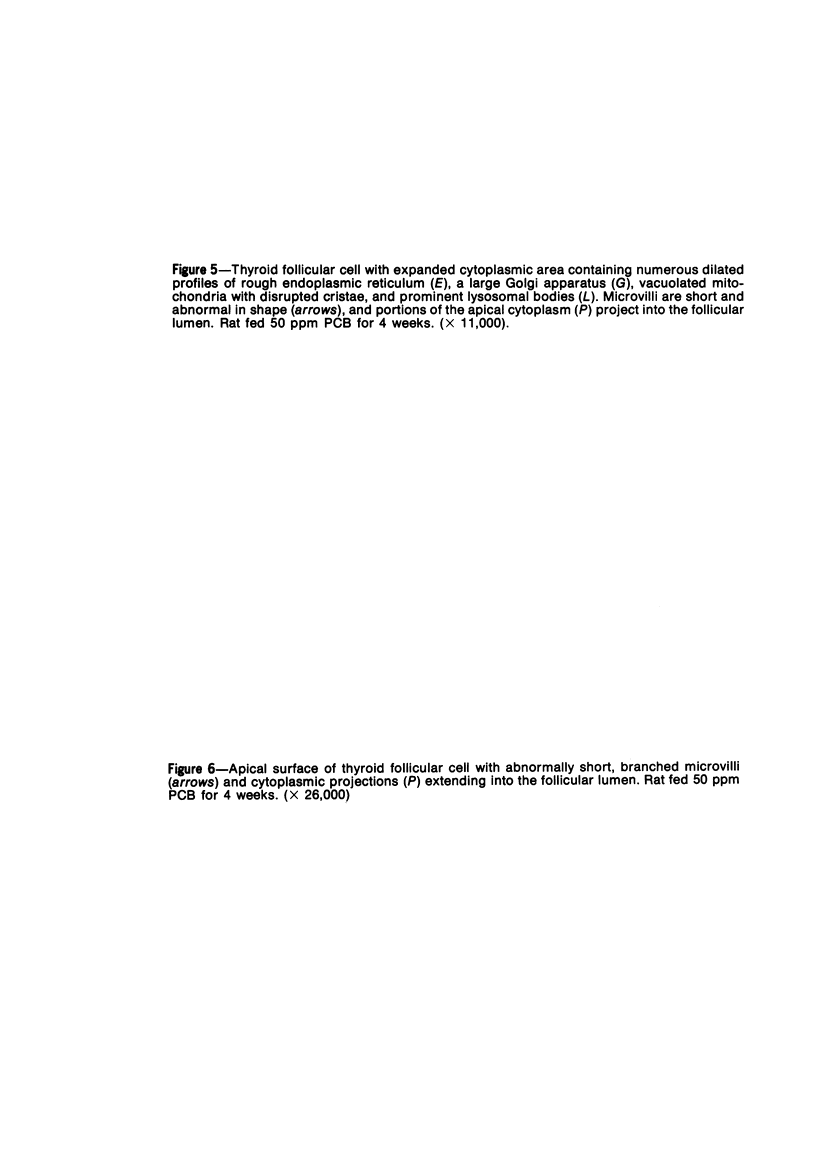
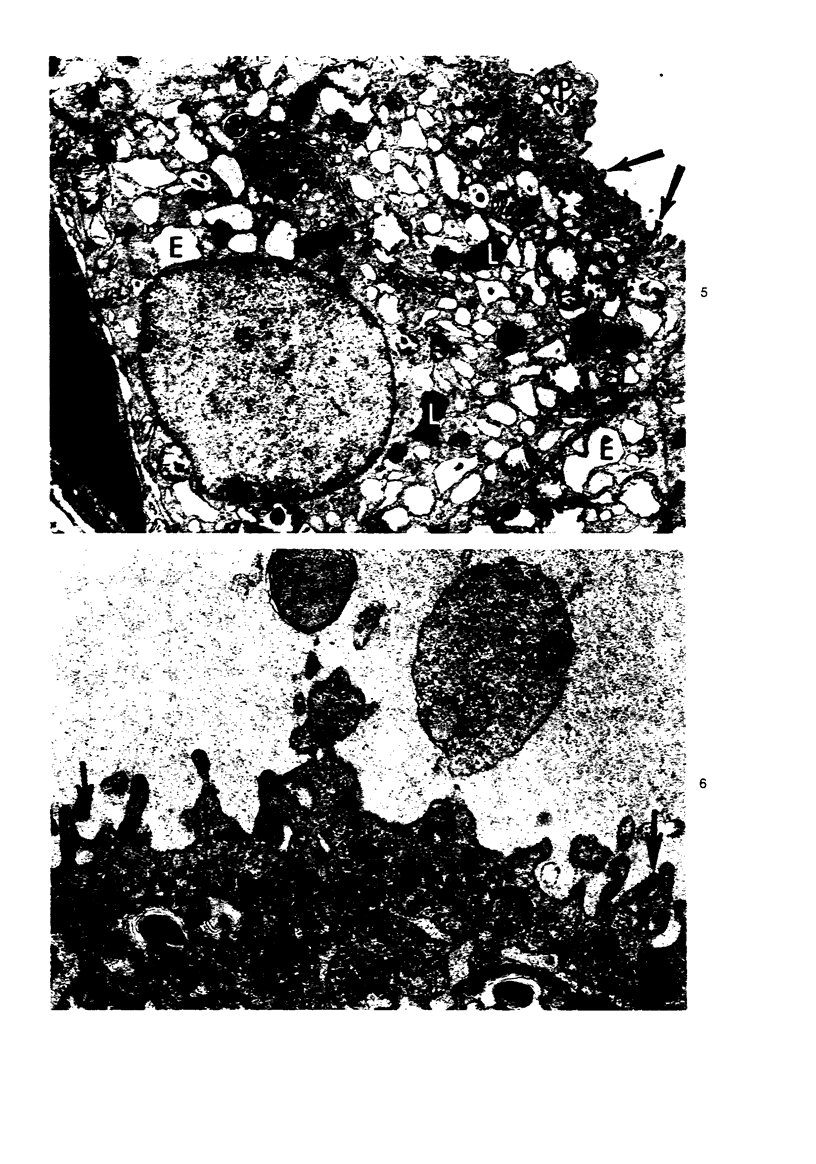
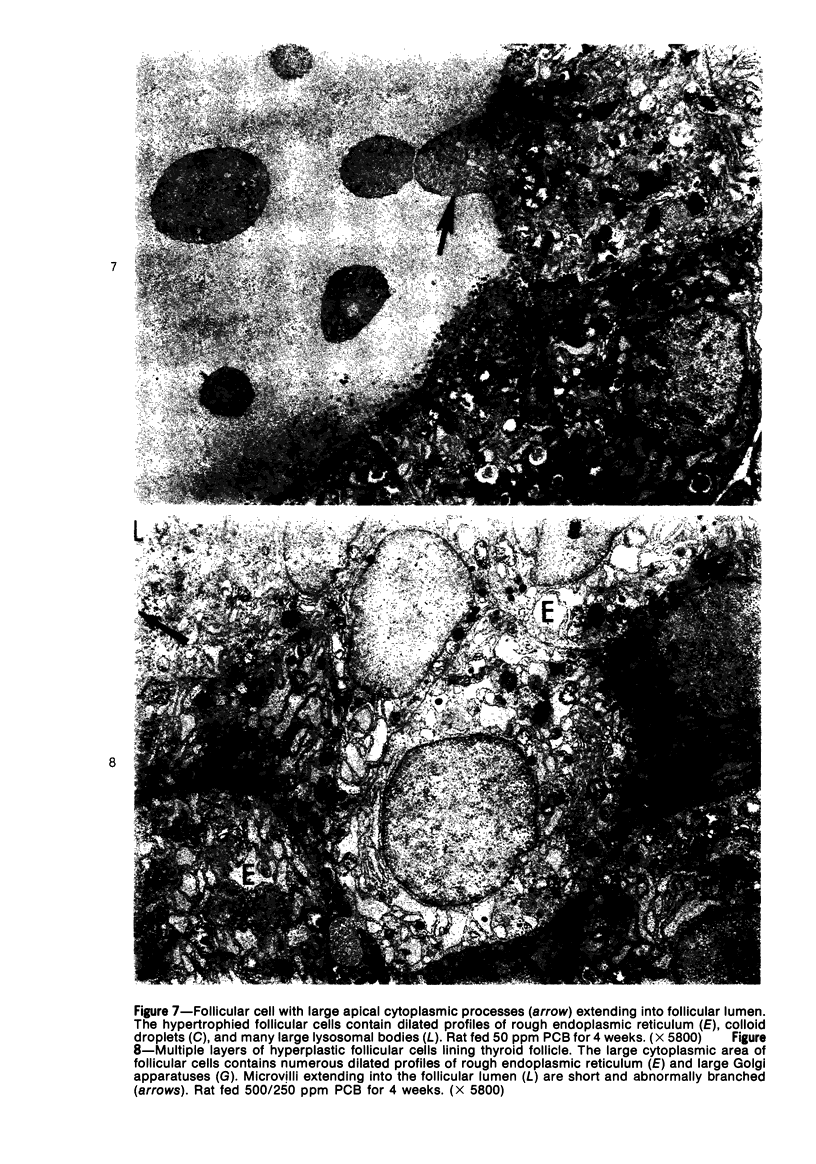
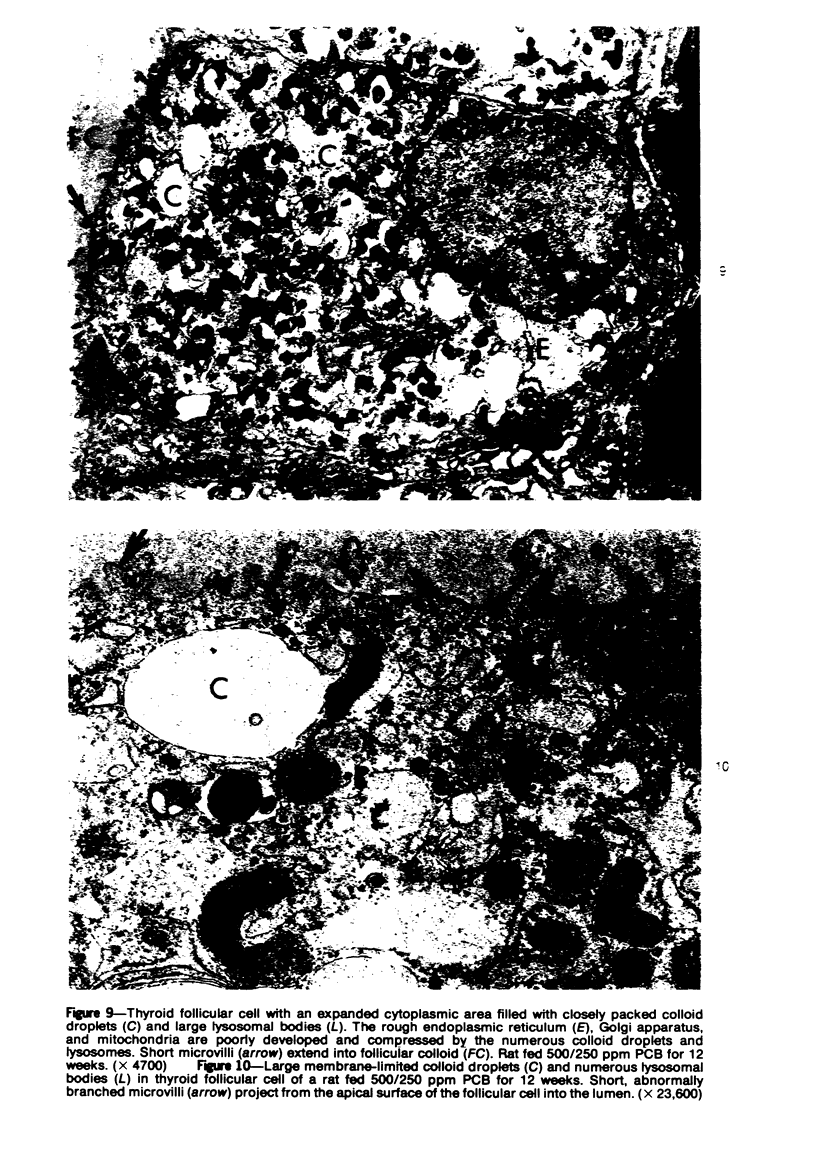
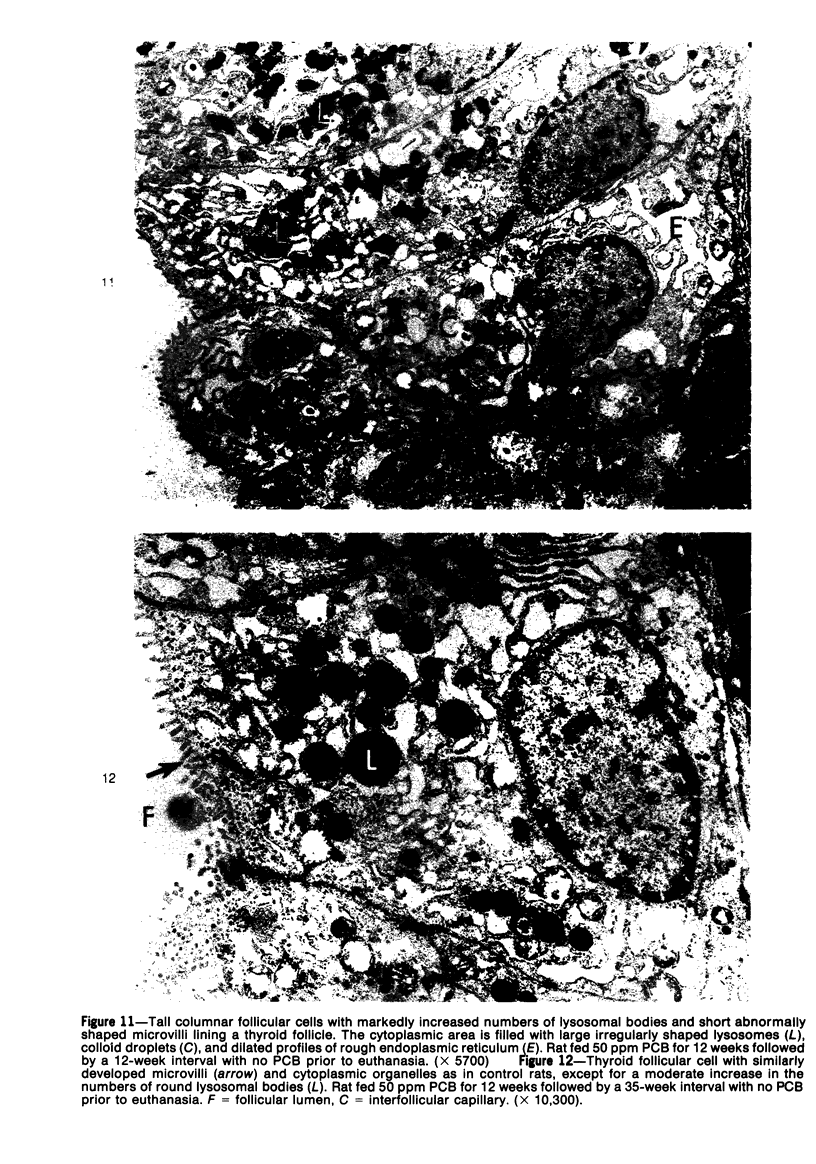
Images in this article
Selected References
These references are in PubMed. This may not be the complete list of references from this article.
- Ax R. L., Hansen L. G. Effects of purified polychlorinated biphenyl analogs on chicken reproduction. Poult Sci. 1975 May;54(3):895–900. doi: 10.3382/ps.0540895. [DOI] [PubMed] [Google Scholar]
- BURSTONE M. S. Histochemical comparison of naphthol AS-phosphates for the demonstration of phosphatases. J Natl Cancer Inst. 1958 Mar;20(3):601–615. [PubMed] [Google Scholar]
- Bastomsky C. H. Effects of a polychlorinated biphenyl mixture (aroclor 1254) and DDT on biliary thyroxine excretion in rats. Endocrinology. 1974 Oct;95(4):1150–1155. doi: 10.1210/endo-95-4-1150. [DOI] [PubMed] [Google Scholar]
- Bastomsky C. H., Murthy P. V., Banovac K. Alterations in thyroxine metabolism produced by cutaneous application of microscope immersion oil: effects due to polychlorinated biphenyls. Endocrinology. 1976 May;98(5):1309–1314. doi: 10.1210/endo-98-5-1309. [DOI] [PubMed] [Google Scholar]
- Bastomsky C. H., Murthy P. V. Enchanced in vitro hepatic glucuronidation of thyroxine in rats following cutaneous application or ingestion of polychlorinated biphenyls. Can J Physiol Pharmacol. 1976 Feb;54(1):23–26. doi: 10.1139/y76-004. [DOI] [PubMed] [Google Scholar]
- Bastomsky C. H., Wyse J. M. Enhanced thyroxine metabolism following cutaneous application of microscope immersion oil. Res Commun Chem Pathol Pharmacol. 1975 Apr;10(4):725–733. [PubMed] [Google Scholar]
- Braunberg R. C., Dailey R. E., Brouwer E. A., Kasza L., Blaschka A. M. Acute, subacute, and residual effects of polychlorinated biphenyl (PCB) in rats. I. Biologic half-life in adipose tissue. J Toxicol Environ Health. 1976 May;1(5):683–688. doi: 10.1080/15287397609529368. [DOI] [PubMed] [Google Scholar]
- Finklea J., Priester L. E., Creason J. P., Hauser T., Hinners T., Hammer D. I. Polychlorinated biphenyl residues in human plasma expose a major urban pollution problem. Am J Public Health. 1972 May;62(5):645–651. doi: 10.2105/ajph.62.5.645. [DOI] [PMC free article] [PubMed] [Google Scholar]
- Fregly M. J., Waters I. W., Straw J. A. Effect of isomers of DDD on thyroid and adrenal function in rats. Can J Physiol Pharmacol. 1968 Jan;46(1):59–66. doi: 10.1139/y68-010. [DOI] [PubMed] [Google Scholar]
- Grant D. L., Moodie C. A., Phillips W. E. Toxicodynamics of aroclor 1254 in the male rat. Environ Physiol Biochem. 1974;4(5):214–225. [PubMed] [Google Scholar]
- Hammond A. L. Chemical pollution: polychlorinated biphenyls. Science. 1972 Jan 14;175(4018):155–156. doi: 10.1126/science.175.4018.155. [DOI] [PubMed] [Google Scholar]
- Hansen L. G., Byerly C. S., Metcalf R. L., Bevill R. F. Effect of a polychlorinated biphenyl mixture on swine reproduction and tissue residues. Am J Vet Res. 1975 Jan;36(1):23–26. [PubMed] [Google Scholar]
- Hansen L. G., Wilson D. W., Byerly C. S. Effects on growing swine and sheep of two polychlorinated biphenyls. Am J Vet Res. 1976 Sep;37(9):1021–1024. [PubMed] [Google Scholar]
- Harris J. R., Rose L. Toxicity of polychlorinated biphenyls in poultry. J Am Vet Med Assoc. 1972 Dec 1;161(11):1584–1586. [PubMed] [Google Scholar]
- Hurst J. G., Newcomer W. S., Morrison J. A. Some effects of DDT, toxaphene and polychlorinated biphenyl on thyroid function in Bobwhite quail. Poult Sci. 1974 Jan;53(1):125–133. doi: 10.3382/ps.0530125. [DOI] [PubMed] [Google Scholar]
- Jefferies D. J., French M. C. Avian thyroid: effect of p,p'-DDT on size and activity. Science. 1969 Dec 5;166(3910):1278–1280. doi: 10.1126/science.166.3910.1278. [DOI] [PubMed] [Google Scholar]
- Kasza L., Weinberger M. A., Carter C., Hinton D. E., Trump B. F., Brouwer E. A. Acute, subacute, and residual effects of polychlorinated biphenyl (pcb) in rats. II. Pathology and electron microscopy of liver and serum enzyme study. J Toxicol Environ Health. 1976 May;1(5):689–703. doi: 10.1080/15287397609529369. [DOI] [PubMed] [Google Scholar]
- Kimbrough R. D., Linder R. E., Gaines T. B. Morphological changes in livers of rats fed polychlorinated biphenyls: light microscopy and ultrastructure. Arch Environ Health. 1972 Nov;25(5):354–364. doi: 10.1080/00039896.1972.10666186. [DOI] [PubMed] [Google Scholar]
- Kimbrough R. D. The toxicity of polychlorinated polycyclic compounds and related chemicals. CRC Crit Rev Toxicol. 1974 Jan;2(4):445–498. doi: 10.3109/10408447309025705. [DOI] [PubMed] [Google Scholar]
- Kolbye A. C. Food exposures to polychlorinated biphenyls. Environ Health Perspect. 1972 Apr;1:85–88. doi: 10.1289/ehp.720185. [DOI] [PMC free article] [PubMed] [Google Scholar]
- Kuratsune M., Yoshimura T., Matsuzaka J., Yamaguchi A. Epidemiologic study on Yusho, a Poisoning Caused by Ingestion of Rice Oil Contaminated with a Commercial Brand of Polychlorinated Biphenyls. Environ Health Perspect. 1972 Apr;1:119–128. doi: 10.1289/ehp.7201119. [DOI] [PMC free article] [PubMed] [Google Scholar]
- Platonow N. S., Saschenbrecker P. W., Funnell H. S. Residues of polychlorinated biphenyls in cattle. Can Vet J. 1971 May;12(5):115–118. [PMC free article] [PubMed] [Google Scholar]
- Price N. O., Young R. W., Dickinson J. K., Bunce G. E. Pesticide residues and polychlorinated biphenyl levels in diets, urine, and fecal matter of preadolescent girls. Proc Soc Exp Biol Med. 1972 Apr;139(4):1280–1283. doi: 10.3181/00379727-139-36347. [DOI] [PubMed] [Google Scholar]
- Richert E. P., Prahlad K. V. Effects of DDT and its metabolites on thyroid of the Japanese Quail, Coturnix coturnix japonica. Poult Sci. 1972 Jan;51(1):196–200. doi: 10.3382/ps.0510196. [DOI] [PubMed] [Google Scholar]
- Seljelid R., Helminen H. J., Thies G. Effect of long-term suppression and stimulation of rat thyroid with special reference to lysosomes. Exp Cell Res. 1971 Dec;69(2):249–258. doi: 10.1016/0014-4827(71)90221-7. [DOI] [PubMed] [Google Scholar]
- Vos J. G., Beems R. B. Dermal toxicity studies of technical polychlorinated biphenyls and fractions thereof in rabbits. Toxicol Appl Pharmacol. 1971 Aug;19(4):617–633. doi: 10.1016/0041-008x(71)90294-8. [DOI] [PubMed] [Google Scholar]
- Vos J. G., Koeman J. H. Comparative toxicologic study with polychlorinated biphenyls in chickens with special reference to porphyria, edema formation, liver necrosis, and tissue residues. Toxicol Appl Pharmacol. 1970 Nov;17(3):656–668. doi: 10.1016/0041-008x(70)90040-2. [DOI] [PubMed] [Google Scholar]
- Wetzel B. K., Spicer S. S., Wollman S. H. Changes in fine structure and acid phosphatase localization in rat thyroid cells following thyrotropin administration. J Cell Biol. 1965 Jun;25(3):593–618. doi: 10.1083/jcb.25.3.593. [DOI] [PMC free article] [PubMed] [Google Scholar]







